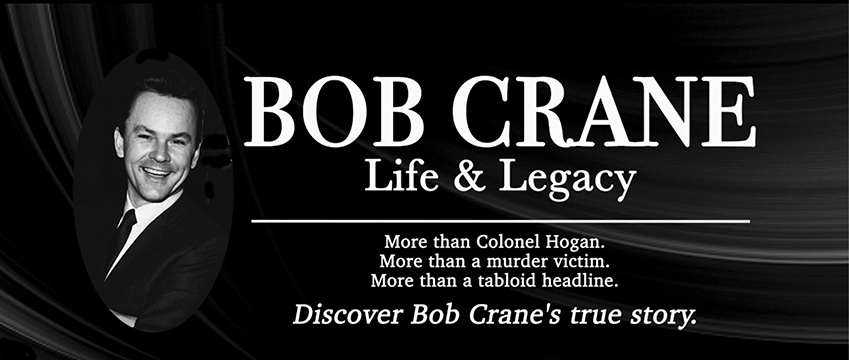As we celebrate this day with our families and friends, we also take time to reflect on the people and things for which we are most thankful. And there are a lot.
We hope that this Thanksgiving Day finds you filled to the brim, not just with turkey and stuffing, but with happiness, fun, warm memories, and a peacefulness that remains with you throughout the holiday season and into the new year.
Best wishes for a safe and happy Thanksgiving!
 |
| Thanksgiving 1971: Bob Crane and Beverly Garland (left) hosted the Thanksgiving Day Parade in Philadelphia, while Bob Barker and Gail Fisher covered the parade in New York City. |
In 1972, AT&T produced a series of television music shows, Top of the Month. The full story by Jai Sharbutt of the Associated Press, originally published on October 12, 1972, is presented here, below the accompanying photograph. According to Sharbutt, Bob Crane's performance was one of the few bright spots in this noble but failed attempt by AT&T.
 |
| Bob Crane and Tony Randall celebrate Thanksgiving the old-fashioned way - as Pilgrims and Indians - in AT&T's 1972 variety series, Top of the Month. |
AT&T Offers 9 Special TV Music Shows as New Series
Top of the Month is a new television series of nine half-hour musical comedy shows. The first three have a lot of snappy patter, singing, dancing, and "sweetened" laugh tracks.
Producers sweeten a laugh track by dubbing in recorded chuckles when the audience response isn't exactly buffo. And Top of the Month may need that kind of sugar. It sure doesn't have the spice yet. Not even with a fine regular cast headed by Tony Randall.
A pity, too, because the shows, bankrolled by the Long Distance Division of American Telephone and Telegraph Co., are a valiant effort to brighten local television programming.
TWO CONDITIONS
AT&T's aim was to offer the once-a-month minispecials to local stations for use in the 30 minutes of prime evening time the Federal Communications Commission has taken from the networks and returned to local broadcasters.
Acting in association with the Bell System's 23 regional companies, AT&T' offered the shows free to local stations on two conditions:
-That the stations would show them during prime viewing time at night, with the choice of time and date left to the stations.
-That only four paid commercials-two from AT&T, two from the local Bell system-would be permitted while the show was on.
MONTHLY THEMES
The theme of each show is a given month - October through June - and events we associate with that month. The theory was that history would be presented with song, dance, and comedy skits.
In practice, the presentation burped, fell down, and died in the opening show, which checked out October with the help of Bonanza's Lorne Greene. The show appears on an estimated 110 stations this month.
Too bad. The writing was feeble, the comedy skits weak, and the singing of costar E.J. Peaker flat. She's an excellent performer, and the vocal wasn't her fault. The problem was that it was her third "Month" segment in as many days. She was lucky she could talk.
An AT&T spokesman said the shows, about October, November, and December, all were taped from a busy Friday through a weary Sunday. October was the last in the series, and Miss Peaker was pooped.
NOVEMBER BETTER
The spokesman for the show said the tight schedule was tailored to accommodate the free hours of the guest starts. Greene, for example, couldn't do his bit until Sunday, the spokesman said.
Resting on the seventh day would have been the wiser course.
The November show was much better, only because of the comic timing of guest star Bob Crane in a funny Thanksgiving skit about Indians, Pilgrims, Plymouth Rock, and all that.
December's offering was memorable in that one rarely sees John Forsythe trapped in a spangled heliotrope jacket, leading a 1957 rock 'n roll group in an assault on "Earth Angel."
For the past five springs, AT&T has presented such memorable programs as Tomorrow, with George C. Scott, and The Record-Makers, with Flip Wilson.
The new shows are a radical innovative departure from the one-hour, once-a-years concerpt. But after the first three shows, all we can do is pray for a swift return of them good old days.
* * * * * * * * * * * * * * * * * * * * * * * * * * * * * * * * * * * * * * * * * * * * * * * * * * * * * * * *
Sharbutt, J. (1972, October 12). AT&T offers 9 special TV music shows as new series.








